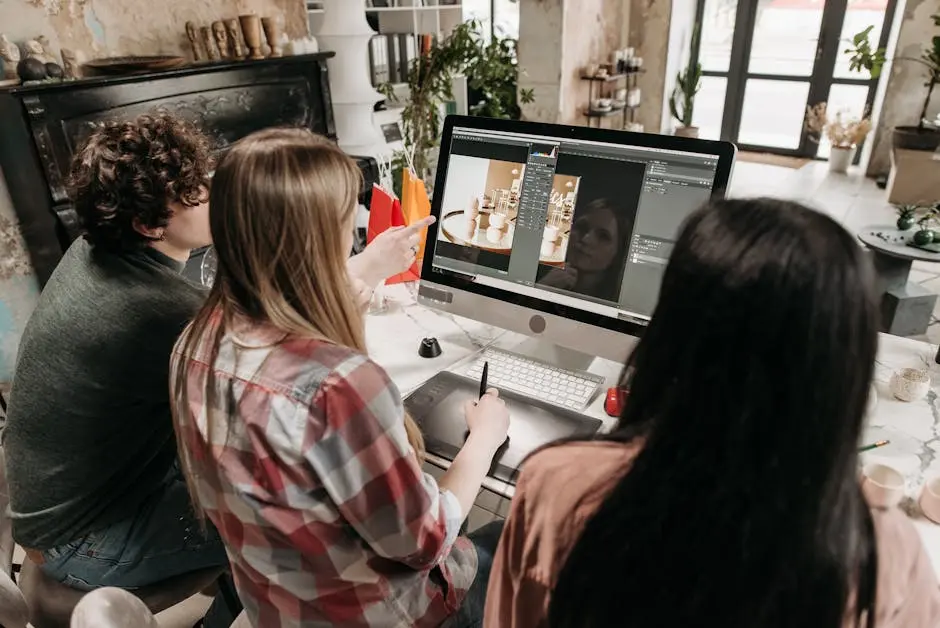7 AI Tools Every Graphic Designer Needs in Their Arsenal

In the ever-evolving world of graphic design, staying ahead of the game means embracing new technologies. Artificial Intelligence is revolutionizing the creative process, offering designers tools that enhance creativity and efficiency. If you're a graphic designer looking to supercharge your workflow, these AI tools are must-haves in your arsenal.
1. Revolutionizing Image Editing
AI-powered image editing tools are transforming the way designers work. These tools use advanced algorithms to automate tedious tasks like background removal and photo retouching, allowing you to focus on the creative aspects of your projects. By saving time on manual corrections, you can invest more in developing innovative concepts and experimenting with design elements.
One standout tool is Recraft, which offers premium image generation and editing capabilities, enabling designers to manipulate images and text with ease. Advanced features like vector creation and image upscaling mean that even the most complex editing tasks can be tackled with confidence. This robust platform caters to both professional designers and brands looking to refine their visual content, promoting a seamless and highly efficient creative process.
2. AI for Dynamic Design Inspiration
Finding inspiration has never been easier with AI-driven platforms. By analyzing trends and user preferences, these tools offer tailored design ideas, helping you brainstorm concepts and overcome creative blocks quickly. Using AI generators like Midjourney enables designers to create unique images from text prompts, sparking new ideas and fostering a vibrant creative environment. This not only expands the realm of possibilities but also ensures that designers stay connected with emerging aesthetic trends.
3. Typography Made Effortless
AI can assist in selecting the perfect typography for your project by analyzing the content and suggesting font combinations that enhance readability and aesthetics, streamlining the process of choosing the right typefaces. This feature helps maintain a cohesive visual identity across various projects, crucial for designers who need to keep branding consistent. Imagine a tool that dynamically offers font styles tailored to your specific design needs and automatically adjusts typographic elements for optimal impact—AI makes it possible.
Beyond just font selection, AI tools excel in adjusting typographic nuances like kerning and line spacing, which are essential for maintaining visual harmony in design layouts. Such capabilities empower designers to craft stunning compositions without dedicating countless hours to intricate font management.
4. Boosting Creativity with Generative Art
Generative art tools powered by AI allow designers to create unique, dynamic visuals that evolve and change. This innovative approach opens up new possibilities for experimentation and creativity. For instance, AI algorithms can generate complex patterns and artworks based on specific parameters you set, enabling an infinite exploration of new artistic styles. Platforms like Looka or Autodraw harness AI to transform simple sketches into polished designs, offering a new dimension of creative freedom and potential.
5. Automated Layout Design
AI assists in generating layout options based on content analysis, helping you design perfectly organized and aesthetically pleasing materials, whether it's for web design or print publications. By utilizing AI-driven templates, you can quickly prototype various design scenarios, significantly reducing the time spent on trial and error. This automation ensures that the structural foundation of your design meets professional standards, leaving you more bandwidth to focus on content customization.
Tools like Adobe's suite further streamline this process; by leveraging AI for tasks such as grid creation and element arrangement, they help maintain symmetry and balance in every project layout. This ensures that the final design not only aligns with client expectations but also engages the audience effectively.
6. Advanced Color Palette Generators
AI color palette tools analyze images and themes to generate harmonious color schemes. This feature aids designers in maintaining color consistency and vibrancy in their creative projects. By employing AI solutions such as Khroma, designers can access unlimited personalized color combinations tailored to the specific moods and emotions they wish to convey. This dynamic capability supports the crafting of compelling visuals that resonate well with target audiences.
7. Streamlining Workflow with AI Assistants
Integrating an AI assistant into your design process can help automate repetitive tasks, manage time more effectively, and streamline project workflows, allowing you to focus on what truly matters. AI assistants can perform tasks like scheduling updates, tracking project timelines, and providing notifications for upcoming deadlines, which significantly enhances productivity and reduces stress in a fast-paced environment. Embracing AI in such a managerial capacity leaves you with more creative energy to invest in design innovation and client engagement.
Platforms like Roam are exemplary in offering AI-driven project management solutions. They support creative professionals by simplifying task assignments, and allowing freelancers to spend less time on business, and more on doing what they love. Roam has a Fee Finder tool that calculates fair project fees using AI, ensuring that users are being paid fairly.
Roam: Run your design business, not just your projects. Intuitive business management tools for graphic designers.


.png)





